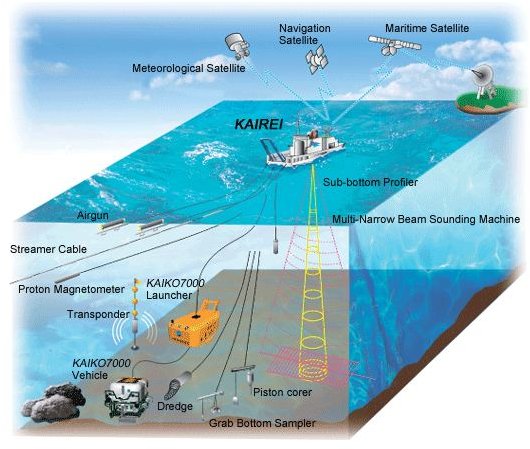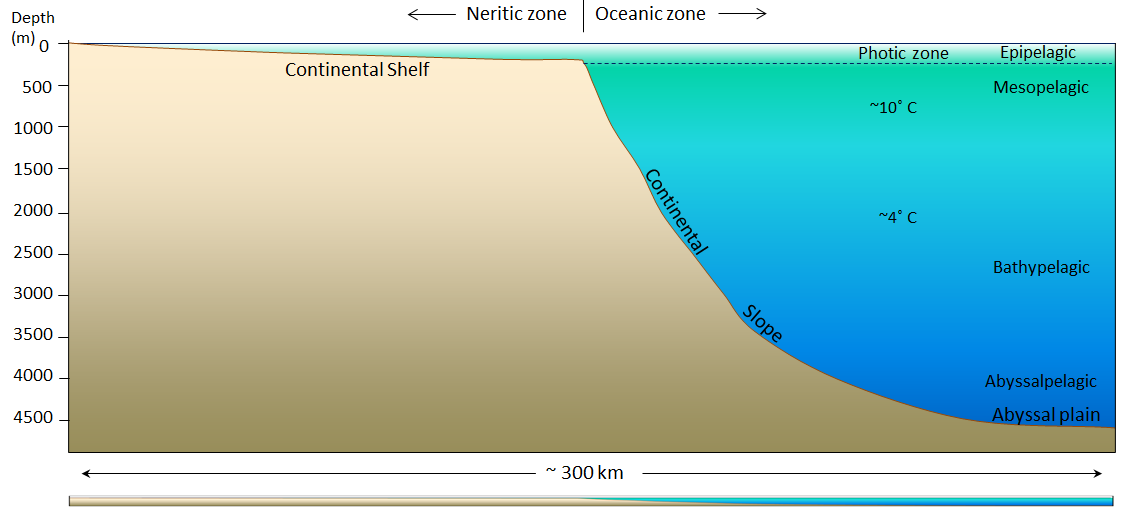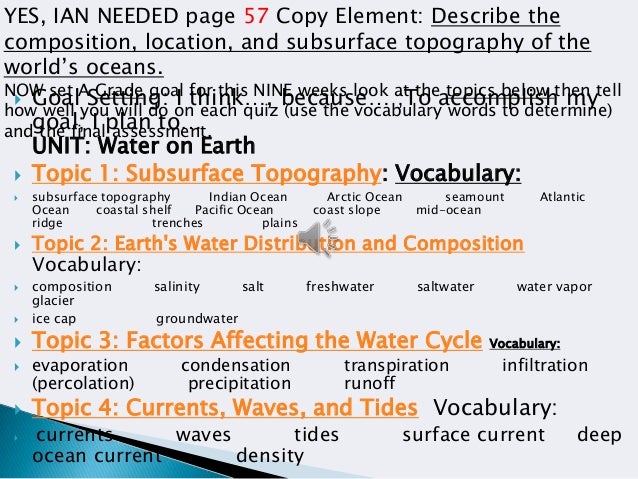Explain the meaning of topography of the ocean floor the geophysical features of the ocean floor what marks the true edge of the continent and divides the ocean floor into 2 provinces.
Explain the topography of the ocean floor.
The magnetism of mid ocean ridges helped scientists first identify the process of seafloor spreading in the early 20th century.
Back in 1977 a very interesting discovery was made on the deep ocean floor where no light penetrates.
Different parts of the oceans are different.
Basalt the once molten rock that makes up most new oceanic crust is a fairly magnetic substance and scientists began using magnetometers to measure the magnetism of the ocean floor in the 1950s what they discovered was that the magnetism of the ocean floor around.
Identify the following features.
While most life on this planet requires sunlight to live there is an.
Due to this continuous seafloor spreading occurs and makes atlantic ocean floor to be connected to other continental crust making the ocean gets wider over the time.
Earthquakes exist on the ocean floor as well.
This is because the oldest sea floor is subducted under other plates and replaces by new surfaces.
Exercise 18 1 visualizing sea floor topography.
For example in the pacific ocean the oceanic crust dives beneath the continental crust.
Subduction and sea floor spreading are processes that could alter the size and form of the ocean.
A method of mapping the topography of the ocean floor along a strip up to 60 km.
Bathymetry the shape of the ocean floor is largely a result of a process called plate tectonics the outer rocky layer of the earth includes about a dozen large sections called tectonic plates that are arranged like a spherical jig saw puzzle floating on top of the earth s hot flowing mantle.
This study is extensive and it has been established that the ocean floor has similar features of mountains and valleys as on the earth.
A a continental shelf b a continental slope c a spreading ridge d a subduction zone with a deep trench e an abyssal plain and f some isolated seamounts.
Plate tectonics and the ocean floor.
The under water topography maps have been developed by the study of ocean floor topography.
Very little of the sea floor is older than 150 million years.
Explain what graded bedding is and how it forms.
Scientists use the magnetic polarity of the sea floor to determine the age.
Seafloor topography is as assorted as that of the continents.
Ocean floor topography involves the study of ocean bottom features including the outer continental shelf continental slopes and ocean waves desktops.
For instance the atlantic ocean is believed to be expanding because of its few trenches.
The tectonic plates are constantly in motion and new surfaces are always being created.










